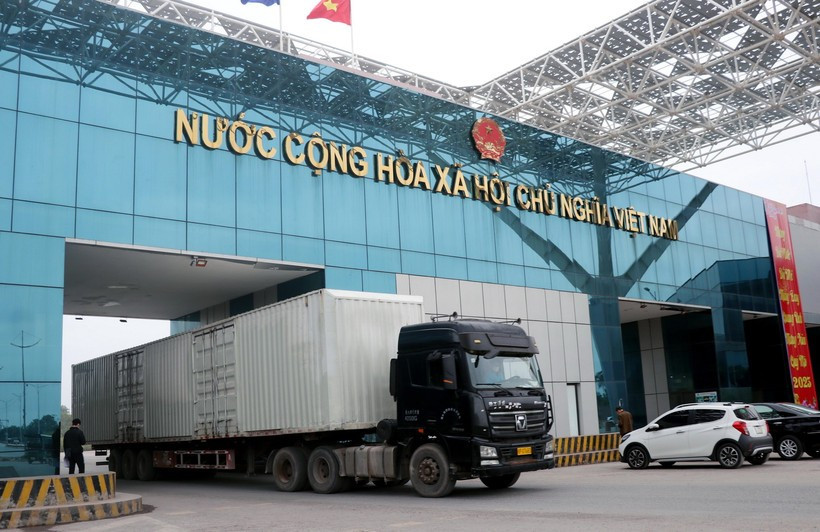Quang Ninh advances plan to develop Mong Cai smart border gate

Quang Ninh, October 1 (VNA) – Building Mong Cai International Border Gate into a smart gateway has been identified as a key task in the resolutions of both Quang Ninh Provincial Party Congress and Mong Cai 1 Ward Party Congress for the 2025–2030 tenure.
At the 16th Congress of the Quang Ninh Provincial Party Organisation, Standing Deputy Secretary of the provincial Party Committee and Chairwoman of the People’s Council Trinh Thi Minh Thanh stressed that the project represents a groundbreaking task, creating a firm political foundation to accelerate cross-border trade and travel between Vietnam and China.
A smart border gate model applies advanced digital technologies throughout the operational process, from the management of people and vehicles to the supervision of import–export activities. It incorporates core technologies such as artificial intelligence (AI), the Internet of Things (IoT), big data, biometrics, intelligent surveillance, and integrated digital platforms.
The Mong Cai International Border Gate is already equipped with modern systems, including automated goods control, barcode and QR code scanners, facial recognition cameras, and automatic vehicle monitoring. It has also been connected to the smart border gate system of Dongxing city, China, enhancing management efficiency, saving time and costs for businesses, and strengthening security and law enforcement.
According to Ho Quang Huy, Secretary of the Mong Cai 1 Ward Party Committee, authorities will continue working with the provincial Border Gate Management Board to build Mong Cai into a smart international border gate, while further developing the Mong Cai Border Economic Zone as one of Vietnam’s eight key border gate economic hubs. By 2025, with a vision to 2030, efforts will focus on synchronising and modernising border trade infrastructure.
To that end, Quang Ninh will accelerate the approval of the subdivision plan for Zone A3 of the Mong Cai economic cooperation area; review industrial and cluster projects in line with the provincial planning scheme for 2021–2030 and the general planning scheme of the Mong Cai Border Gate Economic Zone to 2040; and attract investment in major infrastructure projects such as Ha Long–Mong Cai railway, Bac Luan 3 bridge, and Luc Lam industrial park, linked with the cross-border cooperation zone between Mong Cai (Vietnam) and Dongxing (China).
These projects are expected to leverage the strengths of both sides to foster new industries, including processing and manufacturing, high-tech and digital transformation sectors, and environmentally friendly industries. At the same time, Mong Cai 1 ward is set to become a modern logistics hub.
Recently, delegations from Mong Cai’s wards 1, 2, 3 and Hai Son commune held talks with Dongxing authorities to advance commitments between Quang Ninh province and China’s Guangxi Zhuang Autonomous Region, covering the pilot implementation of the smart border gate, the Mong Cai–Ha Long–Hai Phong railway, the Bac Luan 3 bridge, a steel bridge at the Km3+4 floating bridge crossing, and the cross-border industrial cooperation zone./.





